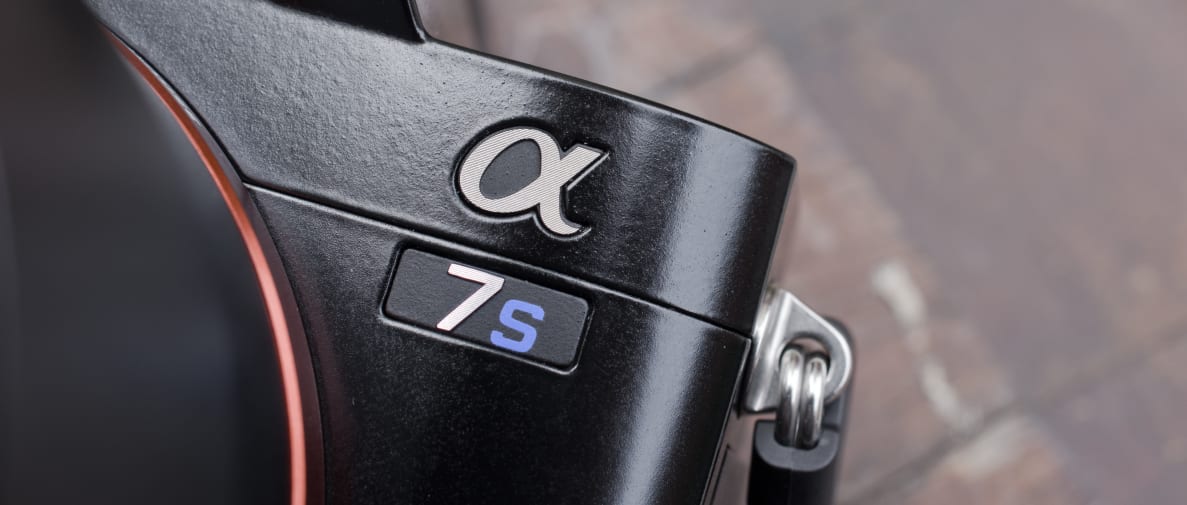The hype machine in enthusiast circles went into overdrive, making these cameras seem like the end-all-be-all of digital photography. In the cold, grey light of dawn, though, the truth was that both models were clearly first-generation products with plenty of issues. Warts and all, it was easy to see the potential there, and the 36-megapixel A7R did well enough to earn our coveted Editors' Choice award.
While we were eager to see how Sony would follow up on the A7/A7R's success, we didn't think it would come so soon. The third entry into the A7 series, the Sony Alpha A7S (MSRP $2,499.99) dropped last year seemingly out of nowhere. It's not a second-generation product so much as an answer to every enthusiast photographer's favorite thought experiment. What if a manufacturer dialed back the megapixels in favor of larger pixels? If you took the A7's 24-megapixel sensor and cut it down to 12MP with pixels twice as big, what could you do? Well, it turns out you can basically see in the dark.
It's not the cheapest camera in the world, and it doesn't fix the major issues from the A7/A7R—focus speed, battery life, lens availability—but it does add incredible low light sensitivity and (with some hangups) 4K video shooting. Is that worth it to you? How much would you pay for a camera that can see in the darkest corners of the earth like it's no big deal?
Design & Handling
A mostly-good combination of elements that still lacks chemistry.
There's little doubt that the A7 cameras are groundbreaking models. As the first mirrorless full-frame system, Sony designed them to look the part of a modern trendsetter. Unfortunately, there are times when the A7S's striking design gets in the way of simple ergonomics.
{{ photo_gallery "tour" }}
As with other cameras, controlling the A7S begins with the grip. It's large and accommodating compared to other Sony cameras, reminding us of a more rigid version of the the original NEX-7's grip. Our only concern this time around is how well it'll hold up with a full-frame lens system in mind. Adapt a lens, or mount something like your typical Canon/Nikon 24-70mm f/2.8 to the A7S and it becomes incredibly unstable. Even with smaller prime lenses, the A7S feels heavy and weighs down your wrists.
It's understandable that the A7 family is stuck serving two masters as far as design goes—it wants to be a little retro and compact, while also needing to appeal to pro shooters who will want to use all kinds of big glass on it. As it stands, we hope that the petite A7 series grows up just a skosh in future iterations to accommodate serious, professional users and hopefully some of the bigger glass Sony has on the current FE lens roadmap.
{{ photo_gallery "design" }}
Thankfully, the A7S is otherwise just like the A7/A7R, controlling more like Sony's Alpha line of DSLRs than earlier NEX cameras. Three control dials, plenty of customizability, and a dedicated exposure compensation dial make shooting with the A7S relatively painless. The refined menu system makes more sense than some past Sony cameras, even though some options can be a little hard to decipher (it isn't immediately obvious what exactly "Audio Signals" changes, for instance).
Our biggest beef with the A7S remains the placement of the very important menu button. This critical button is the only way to get inside the full-blown menu, and it's on the far left side of the camera, exactly where your right hand can't reach it. While a quick menu makes up for this shortcoming a little bit, you miss out on so many other options you might need to access.
Even though our time with the A7S reminded us of the shortcomings of its brethren, it also reinforced how much the two other A7 models got right. The A7S is a competently designed compact camera with a nice set of controls. Its rear LCD and built-in EVF are still top-of-the-line. Overall, it's an experience that, once you get used to its quirks, is almost as good as it should be.
Sensor & Sensitivity
Not actually a forgotten Jane Austen novel
Sony has become an absolute powerhouse in the imaging business, but the company's success isn't due to world-beating camera sales. Mostly, it's thanks to the company's amazing sensors. Since 2010, Sony-manufactured sensors have powered such great cameras as the Olympus OM-D E-M5, Pentax K-3, Panasonic Lumix FZ1000, and even Nikon's D800. Of course, Sony saves some of the most unique chips for the company's own models.
When launching the A7 and A7R last year, Sony made it pretty clear what these cameras were designed to accomplish. The A7R, with its 36-megapixel sensor (sans optical low pass filter), was slow and loud, but it is the sharpest of the bunch. The A7, packing a 24-megapixel sensor with on-chip phase detection, was designed with speed in mind. Bearing both of these distinct cameras in mind, what the heck does the A7S bring to the table?
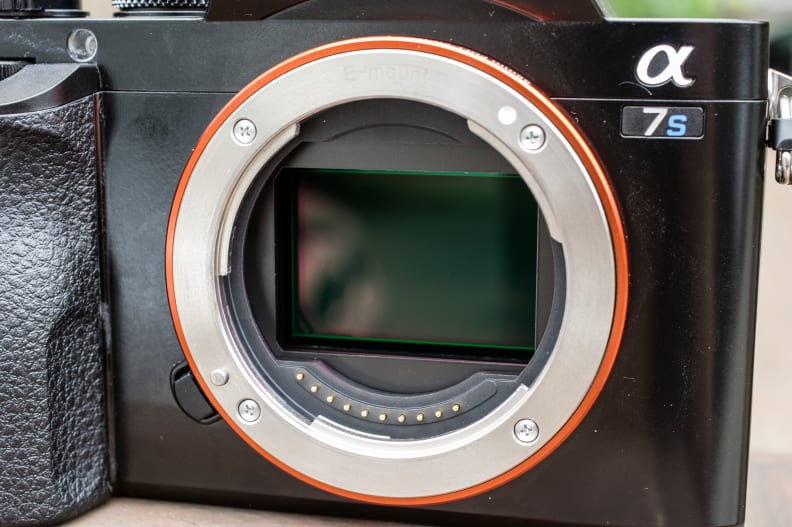
That's a big sensor inside such a compact camera body.
After all, 12 megapixels is way less than 24 or 36, so it can't be that good can it? That's where you'd be absolutely incorrect. While the pixel count is significantly lower than its sister cameras, the A7S rocks at low-light shooting. Since the sensor is the same size with far fewer pixels, individual photosites are bigger and light collection is more effective. Smaller pixels, without some kind of compensation, generally just perform worse than bigger pixels. Having greater resolution can offset this to some degree, but when light is very, very limited the larger pixels will perform better almost every time.

It isn't until around ISO 25,600 that noise makes shots unusable in color.
Due to its lower-resolution sensor and significantly bigger pixels, the A7S is the sensitive child of the A7 family. Its ISO sensitivities range from 100 all the way up to 409,600—that's four more stops of sensitivity up the scale. A shot that would require an eight-second exposure at ISO 100 can be just as bright (albeit much noisier) taken at ISO 409,600 with an exposure of just 1/500th of a second. That's ridiculous.
And, y'know what? These sensitivities aren't completely unusable, either. In our tests, we didn't see aggressive banding until roughly ISO 25,600 and only in low frequency scenes without much detail. We'd say that you'd be absolutely safe limiting auto ISO to 12,800 and letting the camera choose for you. You might not want to shoot in color at higher ISOs due to pronounced color shift and chroma noise, but for black and white conversions, you can essentially take stills long after other photographers have given up hope.
This special asset pays off doubly for video. The lower megapixel count makes it so the sensor can shoot in dimly-lit scenes incredibly well. Using only five lux of indirect ambient light, we recorded the above footage of our standard still life, and were suitably impressed by what we saw. In our sensitivity test, this camera didn't even bat an eye, never dropping below 50 IRE until well after even our pro-quality light meters stopped being able to even measure the lux level.
Features
Some new abilities that'll appeal mostly to videographers
On top of what you get out of the A7 and A7R, the A7S has a few unique mutant powers of its own. This is normally the area where we'd talk about NFC, WiFi, creative filters, and the like. If you want to read about what you can expect from the A7S, we recommend that you check out our A7R review for what the entire family includes. Of special note is the excellent EVF, which is large, bright, detailed, and as comfortable to use as an optical viewfinder—moreso if you are shooting in extreme low light.
The most amazing new feature is something we've seen in some competing cameras—a completely digital, silent shutter. By going silent, the A7S almost becomes a magical device. Memories of the A7R's loud, clacky shutter melt away immediately when you realize that you're silently snapping away using a full frame digital camera. It's uncanny, and it's quieter than even the quiet capture modes on Canon and Nikon cameras.
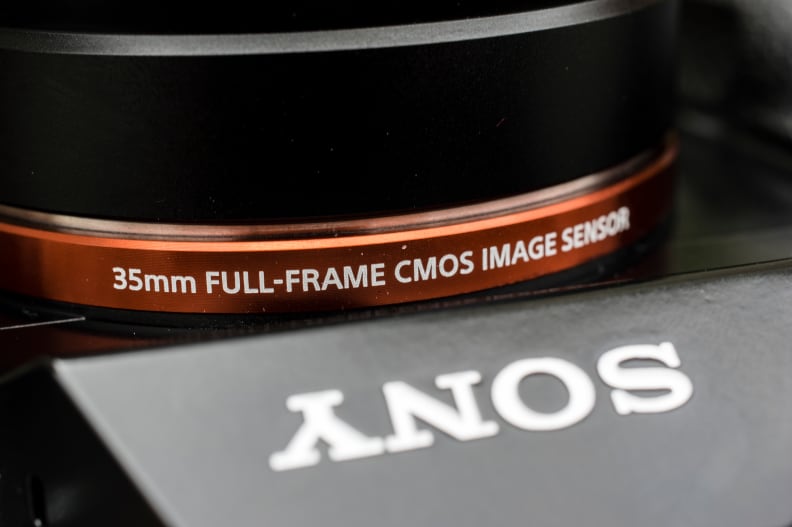
In case you ever forgot that you're wielding a full-frame camera, Sony put this handy reminder around the orange anodized lens mount.
When the A7S was introduced at NAB, the press really focused on its 4K shooting abilities, usually by burying the obvious caveat that you need an external recorder that isn't even on the market right now. The only recorders that are compatible with the A7S's 4K-via-HDMI output at the time of this writing are designed for studio usage (read: you need to be near a wall outlet). Until the Atomos Shogun makes an appearance later on this year, it's not feasible to bring the A7S on location without a car and a power inverter.
The funny thing is that we know that the A7S's Bionz X processor can handle 4K output directly onto an SD card, as a similar chip powers the AX100 4K camcorder. And even once the necessary recorders hit the market you'll still be limited to 8-bit 4K video, something that the Panasonic Lumix GH4 can record internally. To an SD card. Yeah, we were disappointed, too.
While we can see that videographers would be interested in this camera for some scenarios, not everyone is shooting Barry Lyndon. For the money, you could net a Blackmagic Cinema 4K camera which has a global shutter and internal 4K recording. It's a better value proposition, as long as you're not making documentaries about bats or a found-footage horror film about molemen.
Looking beyond 4K, this camera is also great at shooting good ol' 1080/60p, thanks to its direct sensor readout (no lines on the sensor are skipped). HD video is noticeably sharper than what we saw from the A7 and A7R in both bright and low light, as there's far less downsampling that needs to be done. And there's also plenty of other video-centric features carried over from the A7/A7R such as Zebra patterns, audio monitoring, and mic and headphone jacks. The result isn't studio-ready like the new Blackmagic offerings or the GH4 with the YAGH interface unit, but for run 'n gun shooting in available light, the A7S is simply unrivaled.
Performance
A superlative sensor tethered to a less-than-stellar AF system
After putting it through our lab tests, we don't have any deal-breaking complaints about the A7S. It's a competent camera that can make excellent pictures and superb video. Our concerns mainly come down to a couple of annoying issues. While other mirrorless cameras can boast phenomenal autofocus speed, the A7S is clearly burdened by a lackluster AF system.
{{ photo_gallery "sample-photo" }}
Just like the A7R, the contrast-based system offered here simply doesn't track moving subjects well at all. It's fuzzy and imprecise and the only remedy we could find was stopping down the aperture or shooting with wider lenses. Compared to cameras from a few years ago we could probably have given the A7S a pass here, but cameras like the Olympus OM-D E-M1, Fujifilm X-T1, and Panasonic GH4 are all much faster. For pros used to fantastic, reliable focus systems from the likes of Canon and Nikon, the A7S feels very sluggish.
In our labs, however, the A7S really knocked our socks off. Even though we continue to find fault with Sony's JPEG engine, with all its oversharpening and overly aggressive noise reduction, the pure performance on tap couldn't help but buoy this camera's scores in most areas.
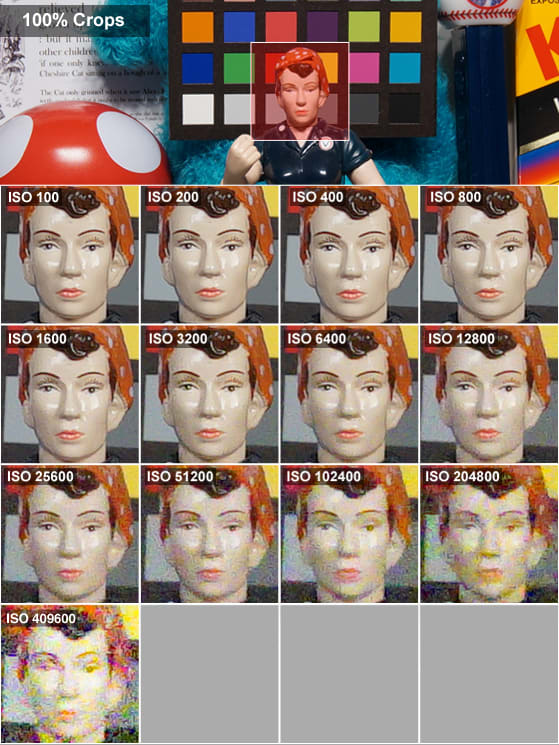
Like we mentioned previously, the ISO sensitivities are incredible. But, what's more is that this camera holds on to usable dynamic range better than just about every other camera on the market today. We measured 1.11 stops of high DR using Imatest at—get this—ISO 102400. At the same sensitivity using Nikon's D4S, Imatest reported no stops of high DR. This may be due to some creativity on Sony's part with how the A7S records RAW files, however.
Video was another bright spot—pun absolutely intended. On top of nearly having night vision, the A7S, with direct sensor readout, preserves detail very well in both bright and low light. In fact, the two tests were almost indistinguishable from each other, which means that even at 60 lux, you can pull about the same amount of resolution from a scene. Discounting the lack of in-camera 4K recording, this should be a pretty solid option for straightforward 1080/60p X-AVC S HD. We'll be exploring this camera's video shooting capabilities more in-depth once we can get our hands on a 4K-capable external recorder, so check back real soon.
A final performance gripe that's definitely worth noting is that the A7S sucks down battery like a thirsty runner rehydrating after a 5K. When shooting with the A7S, you can watch the battery meter run down percentage by percentage with each shutter click. The problem is bad enough that Sony has bundled the A7S with a second battery that, if you're shooting intensely for a day, you're going to want to bring with you.
Read more about what the Sony A7S pulled off in our labs over on the Science Page.
Conclusion
Derivative, but distinctly different
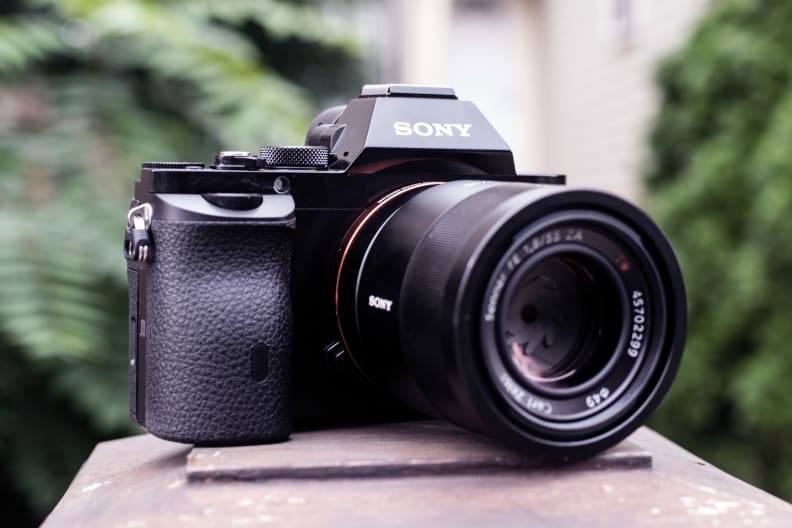
We weren't expecting to like this version of the A7 nearly as much as we did. Given the strengths of its stablemates, there was the sense that the A7S was something of a one-trick pony. But, what a world of difference a sensor swap makes.
While we're disappointed that we weren't yet able to test the A7S's much-touted 4K video feature, the camera's still shooting narrative couldn't be any clearer: never before has so much shooting latitude been crammed into such a small camera. It's a marvel of engineering that doesn't end up being as gimmicky as we predicted in the real world. Armed with some great lenses, this camera becomes an image-making tool that can handle practically any lighting situation extremely well. It isn't perfect, but if you don't need super-fast continuous shooting or incredibly high resolution, it is a functional low-light alternative to the Canon EOS 1D X and Nikon D4S for less than half the price.
The biggest buzzkill remains focusing speed. This little puppy just can't keep up with other flagship mirrorless cameras, or with big full-frame DSLRs to save its life. For all but simple, single-point AF, the A7 cameras just aren't there yet. It's easy to speculate that the focusing bugaboo will be resolved with firmware or with future hardware iterations, but as it stands today, it's just not good enough for the price you're paying. We feel like Sony traded on its usually excellent autofocus in order to push the FE-mount cameras in a different direction, mostly to the cameras' detriment.
If we had to point out another, less important drawback, it's the comparatively low resolution of the sensor. Sure, 12 megapixels was considered great just a few years ago, but it does feel limited if you've been shooting with 20+ and 30+ megapixel cameras lately. That said, you should consider the trade-off. Because what you gain in return is the flexibility of a photographic yogi thanks to the A7S's high ISO prowess. It won't do anything if you're trying (and failing) to focus on moving subjects, but it's a sensitivity matched only by the Nikon D4S currently.
The price is undoubtedly steep, but keep in mind that there is no other camera that can do what the A7S does. Even though we wouldn't recommend this to just anyone (it's a deep cut from Sony, even within the already niche A7 series), if you want a sensitive full-frame sensor inside a compact camera, the A7S just can't be beat. With a couple of the already-legendary FE prime lenses in your camera bag, the A7S will take you further than most other digital cameras you can buy today.
By the Numbers
We expected the A7S to do roughly as well as its forbearers in our labs, and it gave us all the A7R did and more. Thanks to its new 12-megapixel CMOS sensor, it scored even better in some areas. The dynamic range and sensitivity are better than before, making the A7S way more flexible than the A7R or A7. It's a truly special camera that, although it might not be the best A7 for everybody, makes a compelling case for its existence by kicking butt and taking names at high ISOs.
Color & White Balance
Color accuracy wasn't this camera's strong suit, with the A7S scoring below the A7R in our standard test. The camera's most accurate mode, Standard, is one of a few presets that offers options for JPEG shooters. We measured a ∆C00 corrected of 2.95 and a saturation of 109.8%.
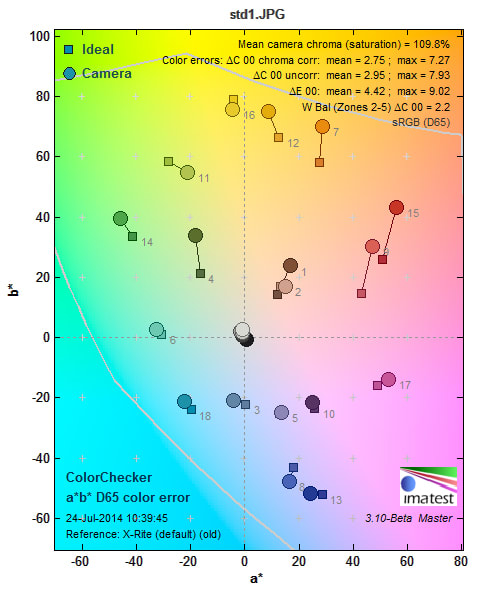
White balance was also a little bit lacking, with decent auto performance but very poor custom performance. We saw errors as high as 403 kelvins, missing the mark especially under fluorescent lights. You can always get around this lowlight by shooting RAW however—something we expect most A7S users will want to do anyway, to take advantage of the extra dynamic range.
Noise

Sony isn't known for subtle noise reduction, and the A7S is a lot like other Sony cameras in that respect. With noise reduction "off"—according to Sony—we saw noise stay below our 2% threshold for quality all the way through ISO 6400. You can further keep a lid on noise by just shooting with the default level of noise reduction, which keeps noise below 2% through to ISO 102400.
That said, the design of the sensor really helps cut down on visible noise until ISO 25600, and we didn't see heavy banding until way after we'd recommend users stop shooting. We think you can shoot in RAW up to ISO 12800 without much worry, since 25600 still begins to get a little too noisy. We found that as soon as too much chroma noise kicks in, the A7S produces images that have a surprisingly fine grain, which makes them decent candidates for black and white conversion.

This photo was taken at max ISO, then converted to black and white. Not bad.
If you're truly desperate for low light sensitivity, the A7S also offers a remarkable top ISO speed of 409,600. The only other camera on the market that can shoot at that sensitivity right now is the Nikon D4S, which is also a full-frame camera with a 16-megapixel sensor and a far heftier price tag. The A7S in all of its JPEG modes handily outperforms the D4S at this ISO speed, with far less noise and a similar level of detail retained in the final shot.
Video
The Sony A7S absolutely stunned us with its HD video. The sensor's sensitivity helps retain detail incredibly well, even while keeping noise down in low light conditions where gain has to be ramped up. The results were so good, that both in our bright and low light tests, we saw almost the same resolution numbers. In our bright light test, the A7S resolved 775 line pairs per picture height (LP/PH) vertical and 775 LP/PH horizontal. With the lights turned down low, we measured 750 LP/PH horizontal and 775 LP/PH vertical. Considering most DSLRs struggle to get above 650 LP/PH in bright light, these are impressive results indeed.
And, even though the quality was pretty bad looking, the A7S can shoot when there's basically no light in a room. Both in an informal test we ran and in our standard minimum illumination test, this camera outgunned what we threw at it. It required less than 1 lux to hit 50 IRE, putting it in the same league as the Nikon D4S, which could basically see in the dark. We were even able to shoot a (fairly dark) image in about 5 lux of incidental lighting. We actually aren't sure just how low a light level the Sony A7S requires because our Spectra IV light meters were reading zero lux even while the A7S was producing an acceptably bright image.
Dynamic Range
We were impressed with the dynamic range that the A7S is capable of interpreting. In our standard DR test, Imatest reported 8.79 stops of high DR. At ISO 200, we logged a slight drop to 8.56 stops. At ISO 400, we measured 8.11 stops. Finally dropping off past 8 at ISO 800, we saw 7.32 stops. ISO 1600 exhibits another drop to only 5.94. ISO 3200 netted 5.26, and ISO 6400 scored 4.03.
Now for the impressive part—the A7S keeps going up the scale. Thanks to a bit of what we think is software trickery, high ISOs report way more DR than other competing full-frame digital cameras. ISO 12,800 reports 2.72 stops of DR, while ISO 25,600 retains 2.18 stops. Going up further, the A7S holds onto 1.38 stops at ISO 51,200 and 1.11 (!) at 102,400. It's at this point that Imatest reports no stops, both at 204,800 and 409,600.
If you look at low-quality dynamic range (which is a more common measurement industry-wide) we managed to get around 12.8 stops at the base ISO of 100. We've seen other sites report range as high as 14 stops in video, as well, which we'll get to when we do our full video breakdown of the A7S.
Shot to Shot
The Sony A7S isn't going to replace a pro-grade DSLR any time soon if you're into high-speed action photography. Not only is the autofocus system too slow and imprecise, the camera also can't keep up when shooting continuously. We were able to nab exactly 5 frames per second at the camera's peak rate.
That's not anywhere near the 12+ frames per second we're used to seeing with pro-quality full-frame cameras like the Nikon D4S and Canon 1D X. Of course, this camera costs far, far less than those cameras. If you're putting it up against the lower-cost full-frame options in Canon and Nikon's stable—the Canon EOS 6D and Nikon D610—then it is closer to the norm. Still, Sony is generally known for faster consumer-grade cameras than the competition, so we're eager to see what the next generation of FE-mount cameras can do.
Meet the tester
Brendan is originally from California. Prior to writing for Reviewed.com, he graduated from UC Santa Cruz and did IT support and wrote for a technology blog in the mythical Silicon Valley. Brendan enjoys history, Marx Brothers films, Vietnamese food, cars, and laughing loudly.
Checking our work.
Our team is here for one purpose: to help you buy the best stuff and love what you own. Our writers, editors, and lab technicians obsess over the products we cover to make sure you're confident and satisfied. Have a different opinion about something we recommend? Email us and we'll compare notes.
Shoot us an email

